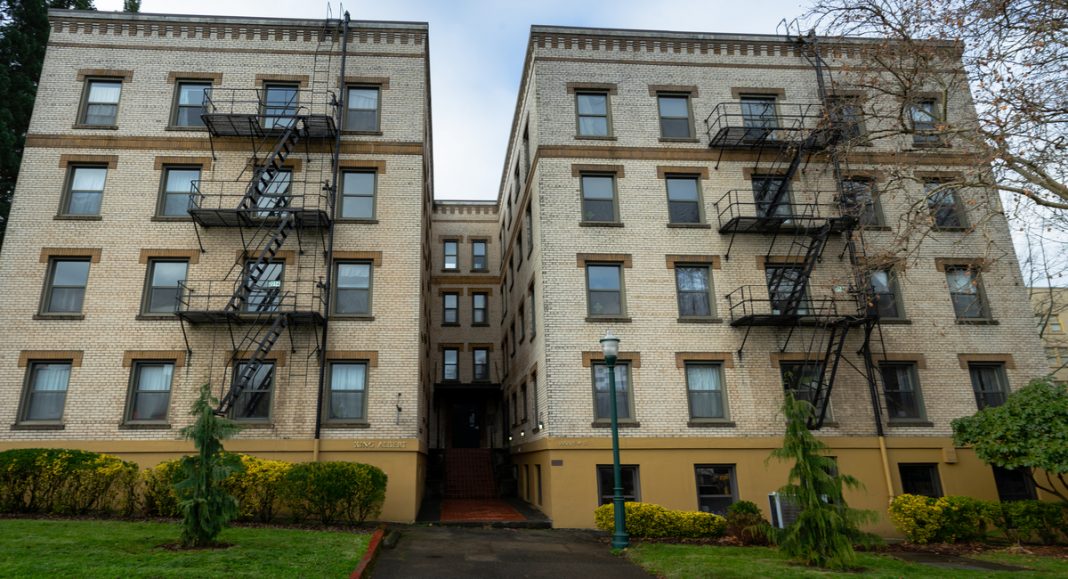Five of Portland State’s residence halls are constructed of unreinforced masonry, building materials vulnerable to collapse during an earthquake. According to Portland City Commissioner Jo Ann Hardesty, “FEMA considers [URMs] the most dangerous buildings when the ground shakes.”
Portland City Council unanimously repealed an ordinance on Oct. 23 that mandated private building owners to notify prospective tenants if their buildings were constructed of URM. The ordinance also mandated the display of cautionary placards at the entrance of these buildings.
A district court ruled that the city ordinance used private citizens and private property to voice the government’s intent and, therefore, the ordinance violated the First Amendment. The district court ordered that Portland could not enforce the URM placards or prospective tenant information on Feb. 14, which went into effect on Feb. 27.
According to district court documents, the validity of the information used to classify structures as URM buildings and to compile them into Portland’s database was also called into question by opponents of the ordinance, such as Masonry Building Owners of Oregon and Fountain Village Development LLC.
The initial information for the URM database was gathered from 1994–96 by Portland’s structural engineer, Michael Hagerty, along with PSU engineering students who Hagerty trained.
The students were broken up into small groups to inspect different areas of buildings and Hagerty did random quality control checks of their work. The PSU students did not keep any documentation of their determination that a building was in fact constructed of URM.
The court came to the conclusion it was unclear how the PSU students determined a building to be made of URM. Hagerty and his team inventoried approximately 2,100 URM buildings in Portland, but since the initial inventory, 250 buildings were found not to have been constructed of URM.
City Commissioner Chloe Eudaly said the issue of the legality of the ordinance was distracting from a much larger concern—the safety of the people.
“As a public council, we have to place public safety and human life before all other considerations,” Eudaly said.
“Any life lost [due to URM building collapse] is too much,” Hardesty—who sat on the committee overseeing the process of repealing the ordinance—added.
The URM database is available online to the public. The disclaimer reads “The City of Portland makes no representations, expressed or implied as to the accuracy of this database. There are no assurances as to whether the information presented is correct or comprehensive.”
About 1,600 URM buildings remain in Portland, one of which is PSU’s King Albert Residence Hall. Executive Director of Housing and Residence Life Mike Walsh agreed with the existing URM database about King Albert’s URM status.
PSU senior and King Albert resident Hannah Morris had never heard of URM buildings nor did she recall seeing a placard on her building.
The St. Helens, Montgomery, Blackstone and Parkway residence buildings are of the same construction.
The buildings will either be retrofitted to withstand seismic activity up to the city’s standards or demolished, but the process is in its early stages. According to Walsh, it will be about a year before either action is taken and there are additional processes if PSU chooses to demolish the buildings.
As an auxiliary branch of PSU, Housing and Residence Life doesn’t receive money from the university and will have to cover any repairs or demolitions. Walsh explained that Ondine—though not constructed of URM—is only rated to withstand seismic activity up to the third floor, and it would cost about $50 million to retrofit the rest of the building.
Before the close of the October ordinance meeting, Jonna Papaefthimiou from the Bureau of Emergency Management and head of a newly-created committee to address the issues of URM buildings said Portland has a 22–26% chance for a major earthquake in the next 50 years.
Steve Carlson, adjunct professor of volcanology and field science at PSU, agreed with Papaefthimiou’s statistic.
“The last major earthquake [in the Portland area] happened around the 1700s, and we’re long overdue,” Carlson said.






